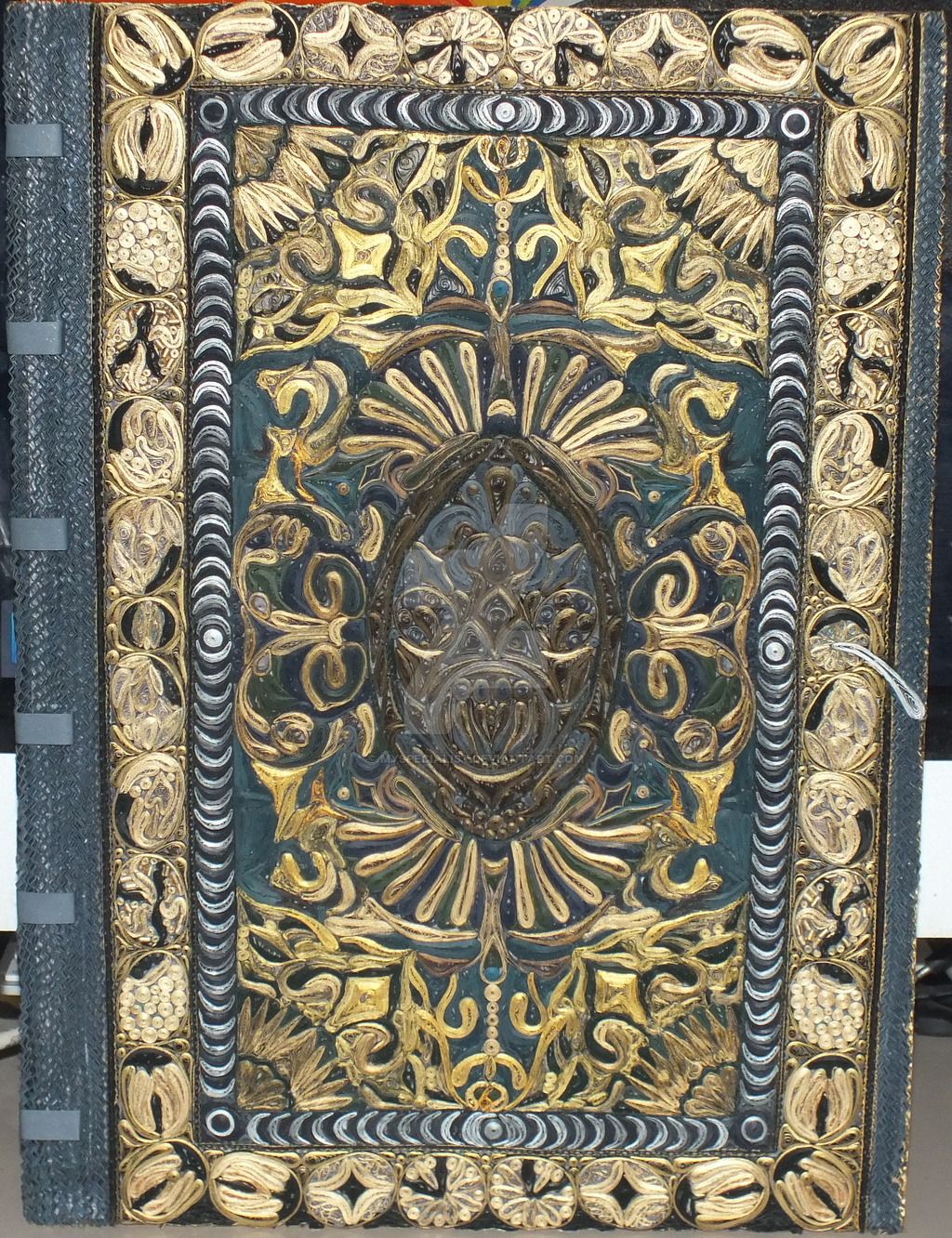Medieval Book Cover: Unveiling Merlin And Arthur's Tale

Table of Contents
The Evolution of Medieval Book Covers
Medieval book covers represent a remarkable evolution in craftsmanship and design. From humble beginnings, these protective layers transformed into elaborate expressions of artistry, reflecting the evolving tastes and technological advancements of the era. The materials used were as varied as the stories they encased.
Early bindings might utilize simple wooden boards covered in leather, often plain or with minimal decoration. However, as time progressed and techniques refined, the creation of a medieval book cover became increasingly sophisticated. More luxurious materials like precious metals, ivory, and even gemstones were incorporated, showcasing the value placed on both the text and its presentation.
- Materials: Parchment, vellum (a finer type of parchment), wood, leather (often dyed and tooled), metal (silver, gold, or brass), and precious stones.
- Techniques: Blind tooling (creating impressions without adding color), gold leafing (applying thin sheets of gold), painting (using vibrant pigments), and intricate inlay work.
- Evolution of Style: Early medieval covers were often simpler, evolving into the richly decorated and highly symbolic covers of the later medieval period, reflecting changes in artistic styles and religious and cultural influences. Gothic influences, for instance, brought about more ornate and flamboyant designs.
Iconography of Merlin and Arthur on Medieval Book Covers
The depiction of Merlin and Arthur on medieval book covers provides valuable insights into the cultural perception of these legendary figures. Artists consistently employed specific visual cues to represent their key attributes.
Merlin, the enigmatic sorcerer, was often portrayed with a long, flowing beard, a magical staff, and robes suggesting wisdom and arcane knowledge. His depictions aimed to capture his mystical power and his crucial role as Arthur's mentor and advisor. Meanwhile, King Arthur, the epitome of chivalrous kingship, was typically depicted wearing a crown, wielding Excalibur (his magical sword), and clad in shining armor, symbols of his power, justice, and heroic status.
- Merlin's Iconography: Magical staff, long beard, flowing robes, often depicted in contemplative or magical poses.
- Arthur's Iconography: Crown, Excalibur, armor, sometimes shown seated at the Round Table, surrounded by knights.
- Arthurian Symbols: Camelot (often represented through architectural details), the Round Table, the Lady of the Lake, and other key figures and elements from the legends all frequently appeared in illuminated borders and illustrations.
The Significance of Manuscript Illumination in Arthurian Narratives
Manuscript illumination, the art of decorating manuscripts with colorful illustrations, borders, and decorative lettering, played a vital role in bringing the Arthurian legends to life. It wasn't simply decoration; it was integral to the storytelling process.
The vibrant colors, detailed illustrations, and symbolic imagery enhanced the narrative's emotional impact, enriching the reader's experience and making the stories more accessible and engaging. The illuminated letters themselves often incorporated intricate designs, forming a visual tapestry that complemented the text. These illuminated manuscripts were not just books; they were works of art in their own right.
- Famous Examples: Many illuminated manuscripts from the medieval period feature Arthurian legends, though many have been lost to time. Those that survive are held in prestigious museums and libraries worldwide.
- Role of Color and Imagery: Specific colors and symbols held significant meanings, enhancing the narrative's symbolic layers. For instance, gold might represent divinity, while specific colors could represent virtues or vices associated with the characters.
- Spread of Arthurian Tales: Manuscript illumination significantly contributed to the popularity and widespread dissemination of Arthurian legends, transforming them from localized stories to widely recognized narratives.
Preserving and Studying Medieval Book Covers
Preserving these delicate and invaluable artifacts presents significant challenges. The materials themselves are susceptible to deterioration over time, requiring careful handling and specialized conservation techniques. Environmental factors, such as humidity and temperature fluctuations, can also cause damage.
Studying medieval book covers offers invaluable insights into medieval art, history, and literature. They reveal information about the techniques used, the artistic styles prevalent during specific periods, and the cultural values reflected in the choices of materials and imagery. By analyzing these covers, scholars gain a deeper understanding of medieval society, its artistic achievements, and the enduring power of the stories they protected.
- Conservation Techniques: Careful cleaning, repair of damaged sections, climate control, and the use of archival-quality materials are crucial for preservation.
- Significant Collections: Museums and libraries worldwide house collections of medieval manuscripts and book covers, offering researchers access to these unique objects.
- Understanding Medieval Culture: The study of these covers helps us to understand artistic trends, religious beliefs, and social structures of the medieval period, revealing much about daily life and cultural values.
Conclusion
Medieval book covers, particularly those depicting the tales of Merlin and Arthur, stand as remarkable testaments to medieval artistry and the enduring power of storytelling. Their evolution, from simple bindings to elaborate artistic creations, reflects technological advancements and changing aesthetic preferences. The iconography employed in depicting Merlin and Arthur reveals much about their cultural significance. Finally, manuscript illumination, a crucial element of these book covers, significantly enhanced the narrative experience and helped spread these iconic stories. Preserving and studying these artifacts is essential to understanding medieval art, history, and literature, offering us a glimpse into a bygone era. Discover more about the captivating world of medieval book covers and the magic they hold, unveiling more of Merlin and Arthur's tale.

Featured Posts
-
 Analyzing Palantir Stock Buy Before May 5th
May 10, 2025
Analyzing Palantir Stock Buy Before May 5th
May 10, 2025 -
 Edmonton Oilers Vs Los Angeles Kings Series Betting Odds And Predictions
May 10, 2025
Edmonton Oilers Vs Los Angeles Kings Series Betting Odds And Predictions
May 10, 2025 -
 Dakota Johnsons Role Choices Chris Martins Potential Influence
May 10, 2025
Dakota Johnsons Role Choices Chris Martins Potential Influence
May 10, 2025 -
 The Impact Of Trumps Policies On Transgender Rights
May 10, 2025
The Impact Of Trumps Policies On Transgender Rights
May 10, 2025 -
 Instagram Vs Tik Tok Ceos Testimony On Growth And Survival
May 10, 2025
Instagram Vs Tik Tok Ceos Testimony On Growth And Survival
May 10, 2025
